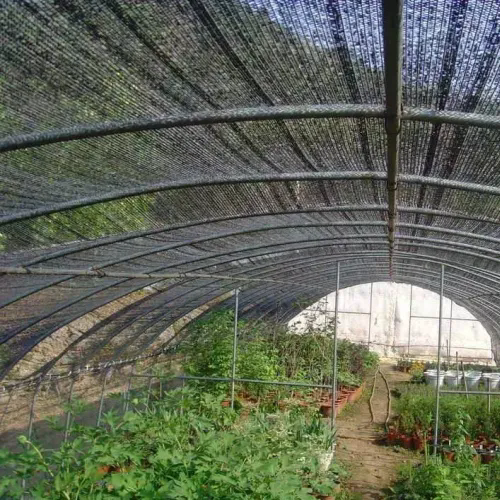The Benefits of Using Sun Shade Nets for Plants: Maximizing Growth and Protection
2024-08-15
In gardening and agriculture, managing sunlight exposure is crucial for the health and productivity of plants. Sun shade nets have become a popular solution for providing optimal growing conditions by regulating the amount of sunlight that reaches plants. These versatile nets offer a range of benefits that can enhance plant growth, protect against environmental stressors, and improve overall crop yields. In this blog, we’ll explore the advantages of using sun shade nets for plants, their types, applications, and how they can transform your gardening or farming practices.
1. What is a Sun Shade Net?
A sun shade net, also known as a shade cloth or shading net, is a mesh fabric designed to reduce the intensity of sunlight reaching plants. Made from materials like polyester or polypropylene, sun shade nets come in various densities and colors, allowing gardeners and farmers to control the amount of shade provided. These nets are typically installed above plants or on structures such as greenhouses to create a controlled environment that supports healthy plant growth.
2. Benefits of Using Sun Shade Nets
Sun shade nets offer numerous benefits that can significantly impact plant health and productivity:
- Protection from Excessive Sunlight: Intense sunlight can cause leaf burn, dehydration, and stress in plants. Sun shade nets reduce the intensity of sunlight, protecting plants from these adverse effects and helping them thrive in high-temperature conditions.
- Temperature Regulation: Shade nets help maintain a more stable temperature around plants by blocking direct sunlight. This temperature regulation is particularly important in preventing overheating and ensuring optimal growing conditions.
- Enhanced Growth and Yield: By providing a controlled amount of shade, sun shade nets can improve plant growth and increase yields. They create a more favorable environment for plants to develop, leading to healthier and more productive crops.
- Reduced Water Usage: With less direct sunlight, plants lose water more slowly through evaporation. This reduction in water loss can lead to lower irrigation needs, making sun shade nets a water-efficient choice for gardening and farming.
- Protection from Pests: Some sun shade nets have additional features, such as fine mesh, that help deter pests and insects from reaching plants. This added protection reduces the need for chemical pest control and promotes a healthier growing environment.
- Improved Quality of Produce: Shade nets can enhance the quality of fruits and vegetables by preventing sunburn and uneven ripening. This results in better-tasting and more visually appealing produce.
- Extended Growing Season: In regions with extreme temperatures, sun shade nets can extend the growing season by providing protection from harsh conditions. This allows for a longer period of plant growth and harvesting.
3. Types of Sun Shade Nets
Sun shade nets come in various types, each suited to different applications and needs:
- Percentage Shade Nets: These nets are available in different percentages, such as 30%, 50%, or 70%, indicating the amount of sunlight they block. The choice of percentage depends on the specific requirements of your plants and the local climate.
- Knitted Shade Nets: Made from knitted polypropylene or polyester, these nets offer durability and flexibility. They provide excellent shading and are commonly used in both residential and commercial settings.
- Woven Shade Nets: Woven shade nets are made from interlaced fibers, providing a uniform shading effect. They are known for their strength and resistance to fraying and are often used in larger agricultural operations.
- Aluminet Shade Nets: Aluminet nets have a reflective surface that reduces heat absorption and provides excellent shading. They are ideal for high-temperature environments and offer additional cooling benefits.
- Customizable Shade Nets: Some suppliers offer customizable shade nets that can be tailored to specific sizes, shapes, and shading requirements. These nets are suitable for unique applications or non-standard installations.
4. Applications of Sun Shade Nets
Sun shade nets are versatile and can be used in a variety of settings:
- Home Gardens: In residential gardens, shade nets protect delicate plants from intense sunlight and help maintain a comfortable growing environment. They are also used to create shaded areas for outdoor seating and recreational spaces.
- Greenhouses: Shade nets are often installed in greenhouses to control light intensity and temperature. They help optimize growing conditions for a wide range of plants and improve overall greenhouse efficiency.
- Commercial Agriculture: In commercial farming, sun shade nets are used to protect crops from excessive heat and sunlight, enhance yield quality, and reduce water consumption. They are commonly used in fruit and vegetable production, as well as in nurseries.
- Orchards and Vineyards: Shade nets are employed in orchards and vineyards to protect fruits and grapes from sunburn, improve ripening, and ensure consistent quality. They also help in managing the microclimate around the plants.
- Landscaping Projects: For landscaping projects, shade nets provide effective shading for ornamental plants, reducing the impact of harsh sunlight and enhancing the visual appeal of outdoor spaces.
5. How to Choose and Install Sun Shade Nets
When selecting and installing sun shade nets, consider the following factors:
- Shade Percentage: Choose a shade percentage that matches the needs of your plants and the local climate. Higher percentages provide more shade, while lower percentages allow more light to pass through.
- Material and Durability: Select a net made from high-quality, durable materials that can withstand environmental conditions. Consider factors such as UV resistance, weather resistance, and longevity.
- Size and Coverage: Measure the area you need to cover and choose a net size that provides adequate coverage. Ensure that the net is large enough to accommodate the full area of your plants or structure.
- Installation Method: Depending on the application, shade nets can be installed using various methods, such as attaching to frames, stakes, or existing structures. Follow installation guidelines to ensure proper tension and coverage.
- Maintenance: Regularly inspect and clean the shade net to remove debris and ensure optimal performance. Repair or replace any damaged sections as needed.
In conclusion, sun shade nets are a valuable tool for optimizing plant growth and protecting your garden or crops from excessive sunlight and heat. By understanding their benefits, types, and applications, you can make informed decisions and enhance your gardening or farming practices. Whether you’re growing delicate plants in a home garden or managing large-scale agricultural operations, sun shade nets offer a practical and effective solution for creating a favorable growing environment and achieving better results.



